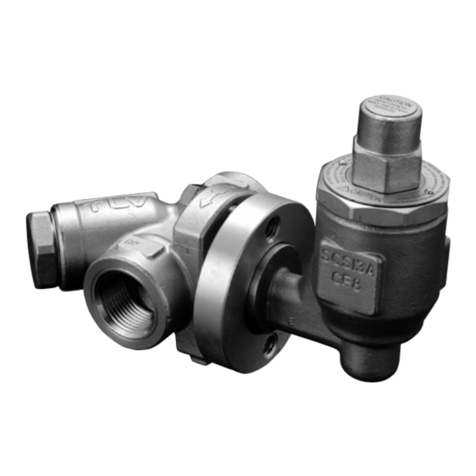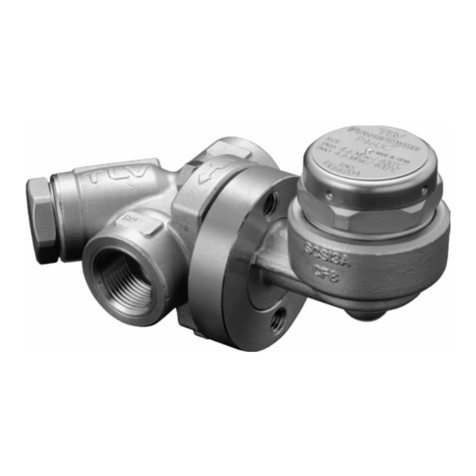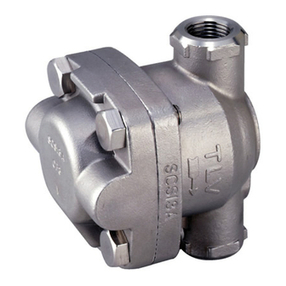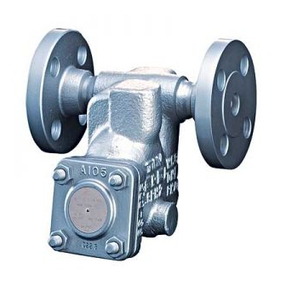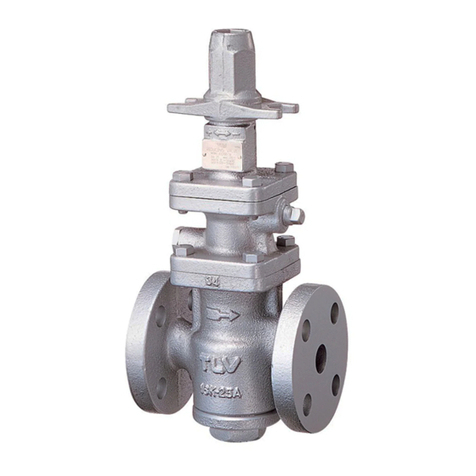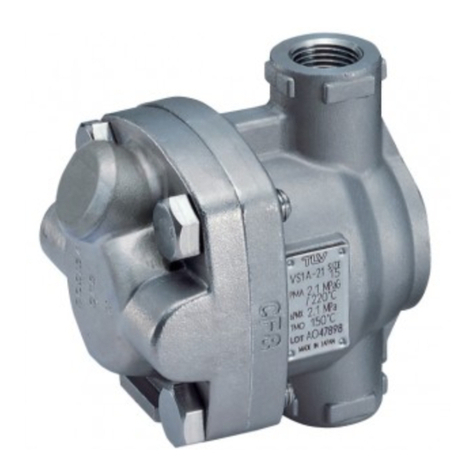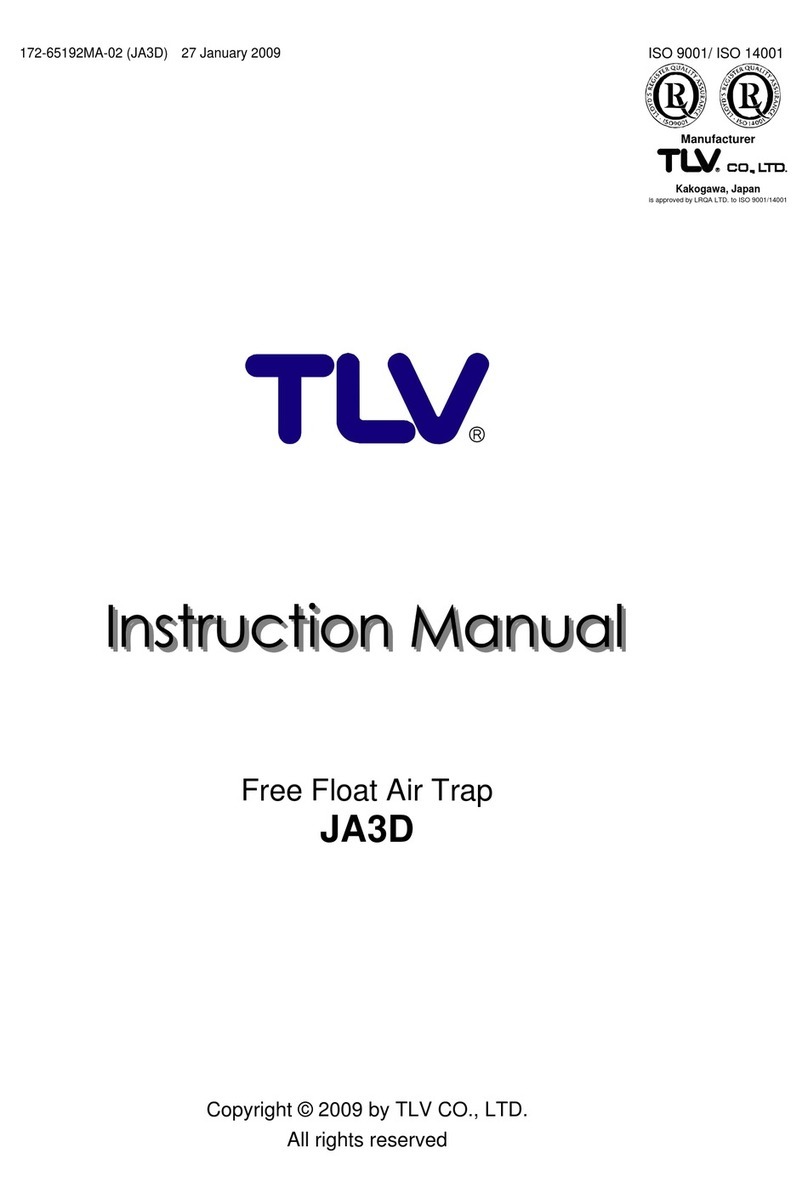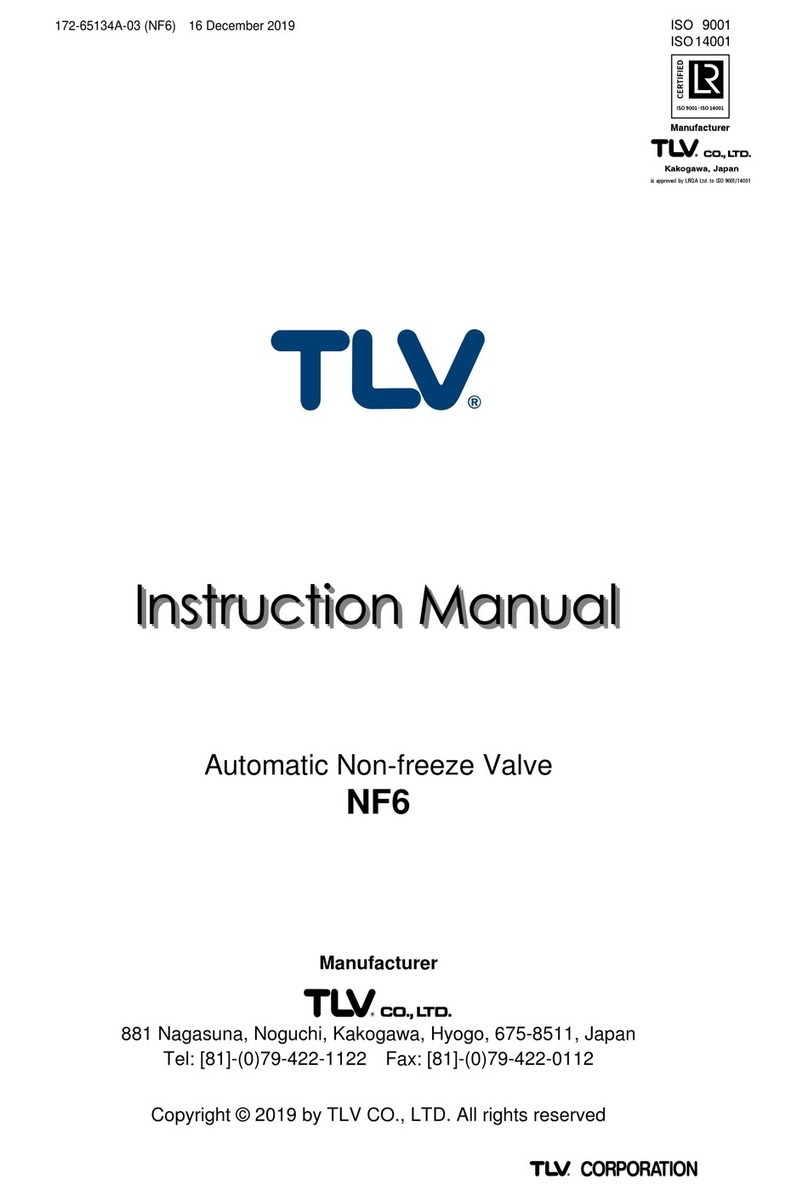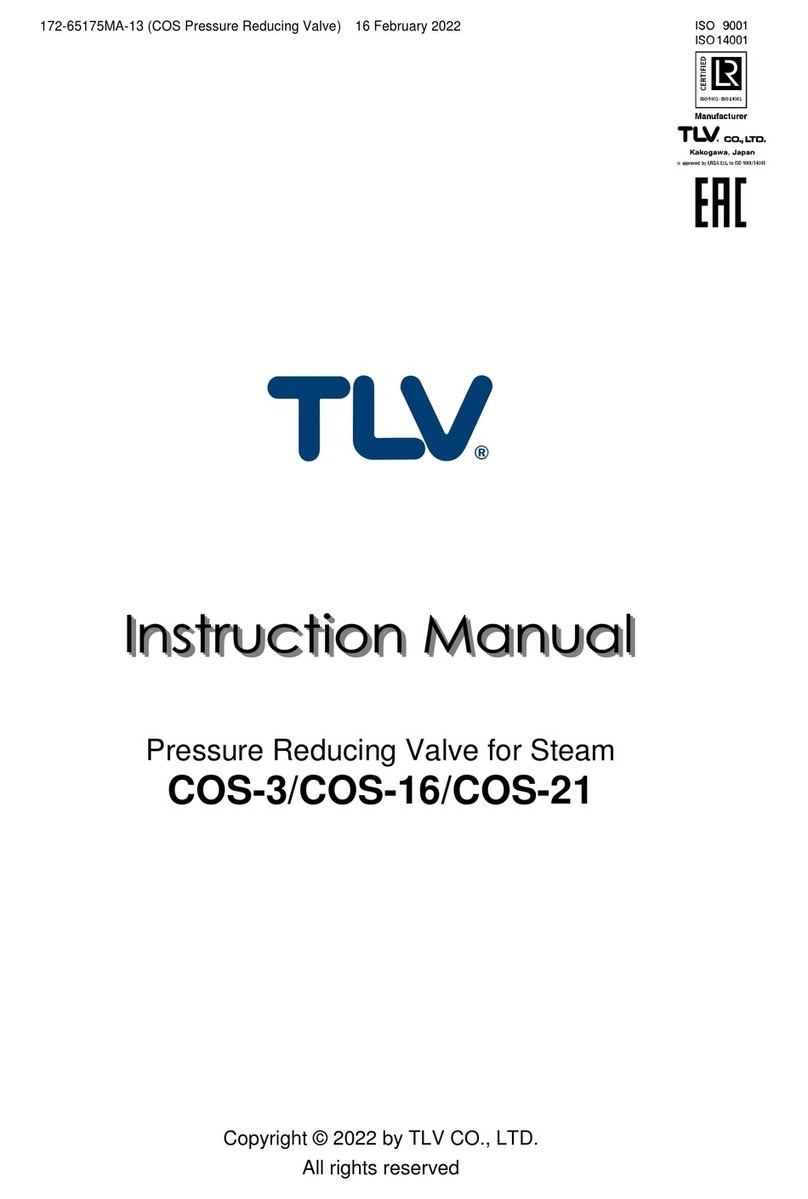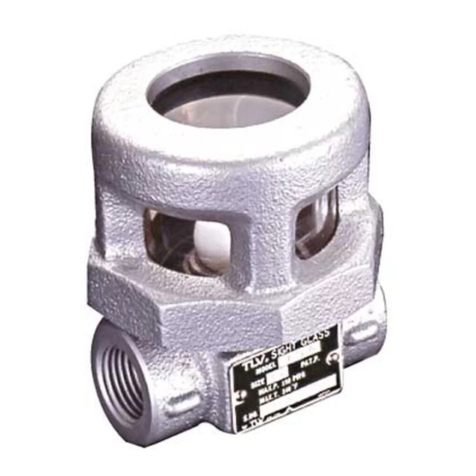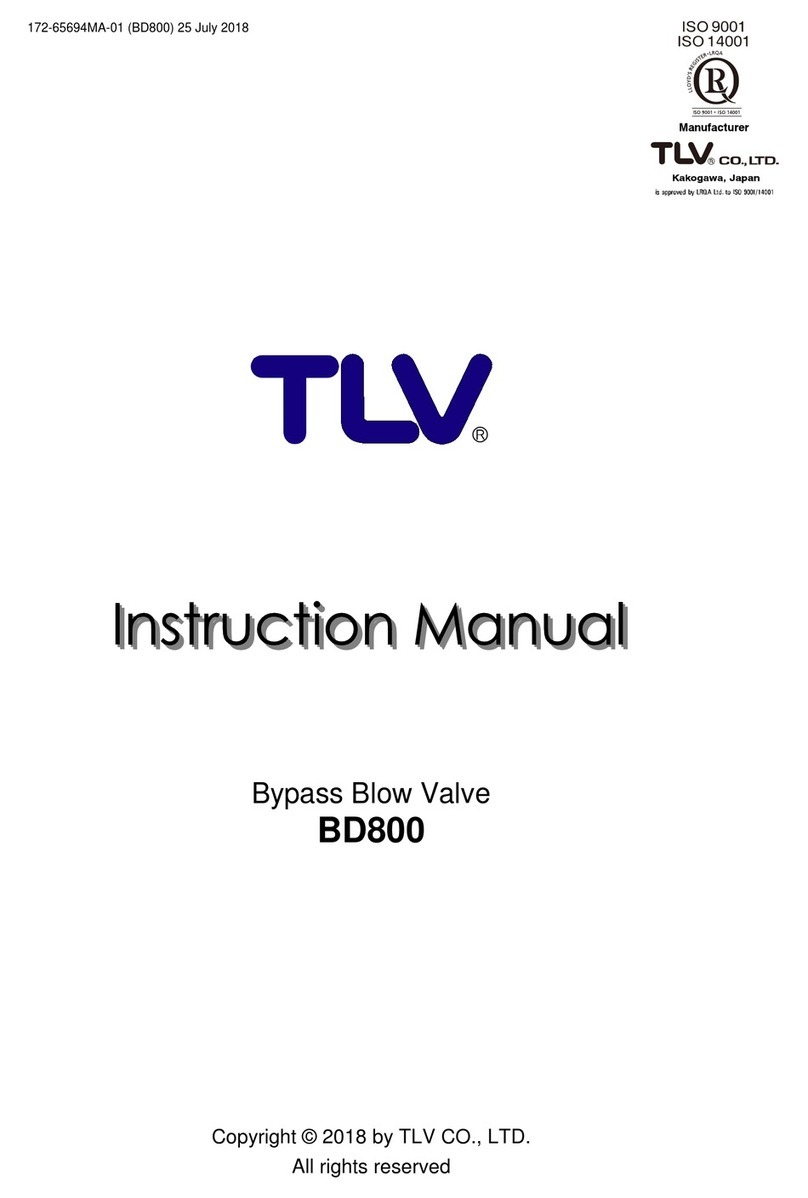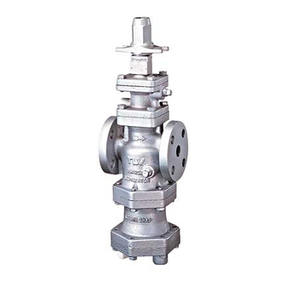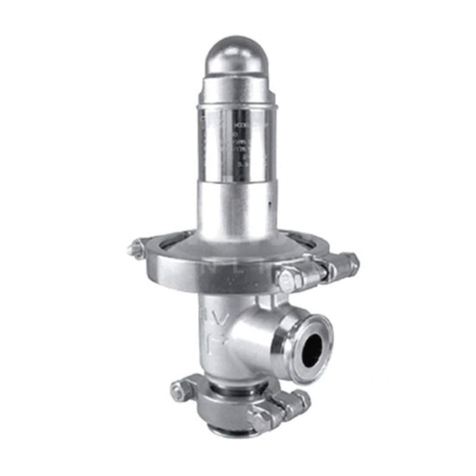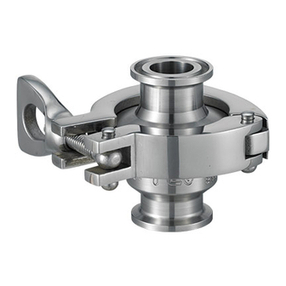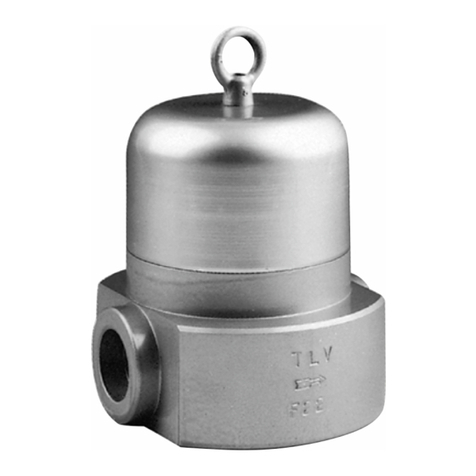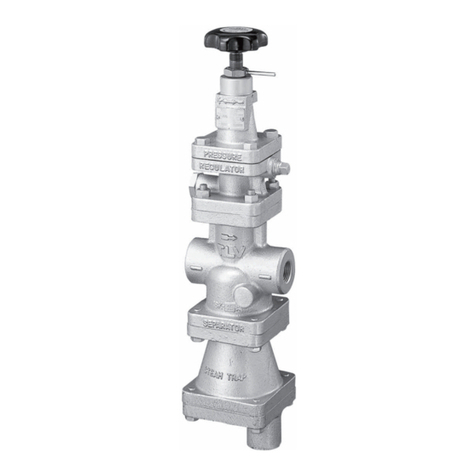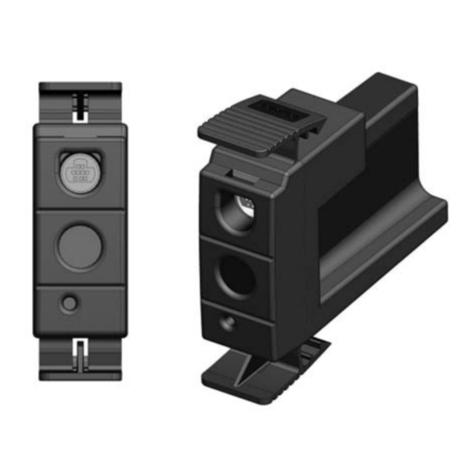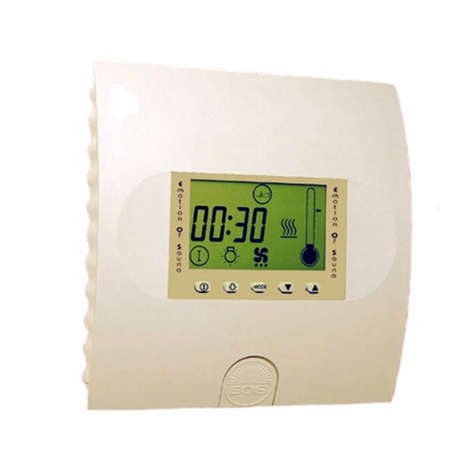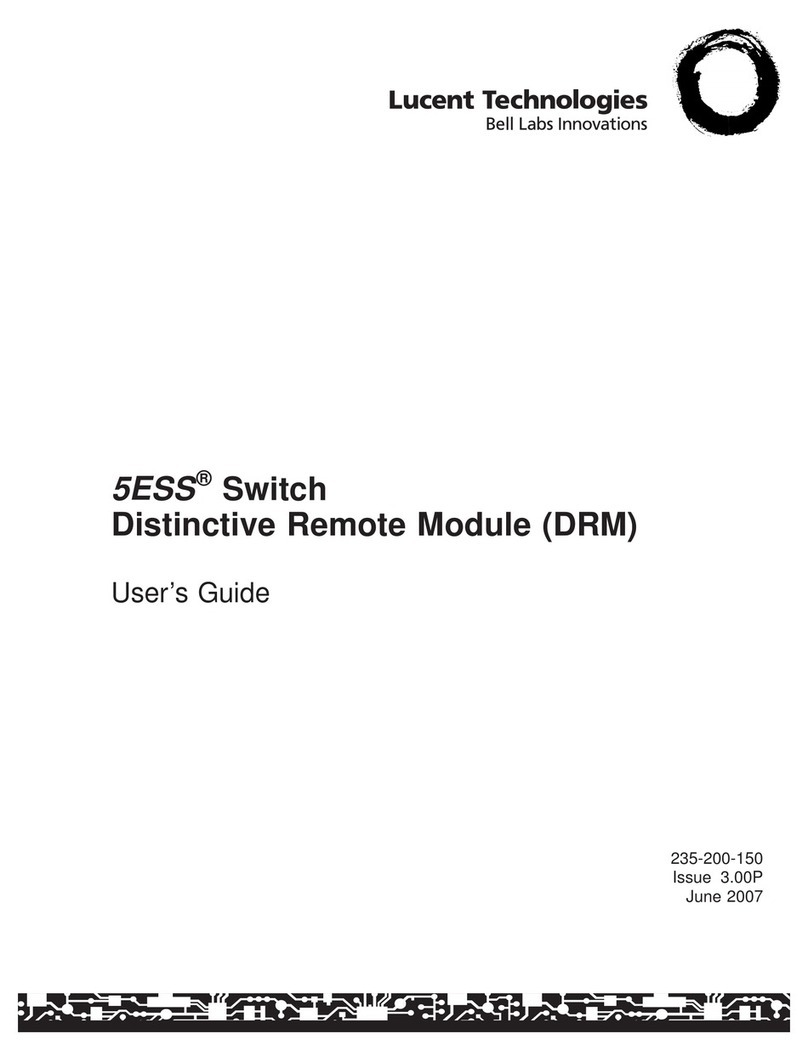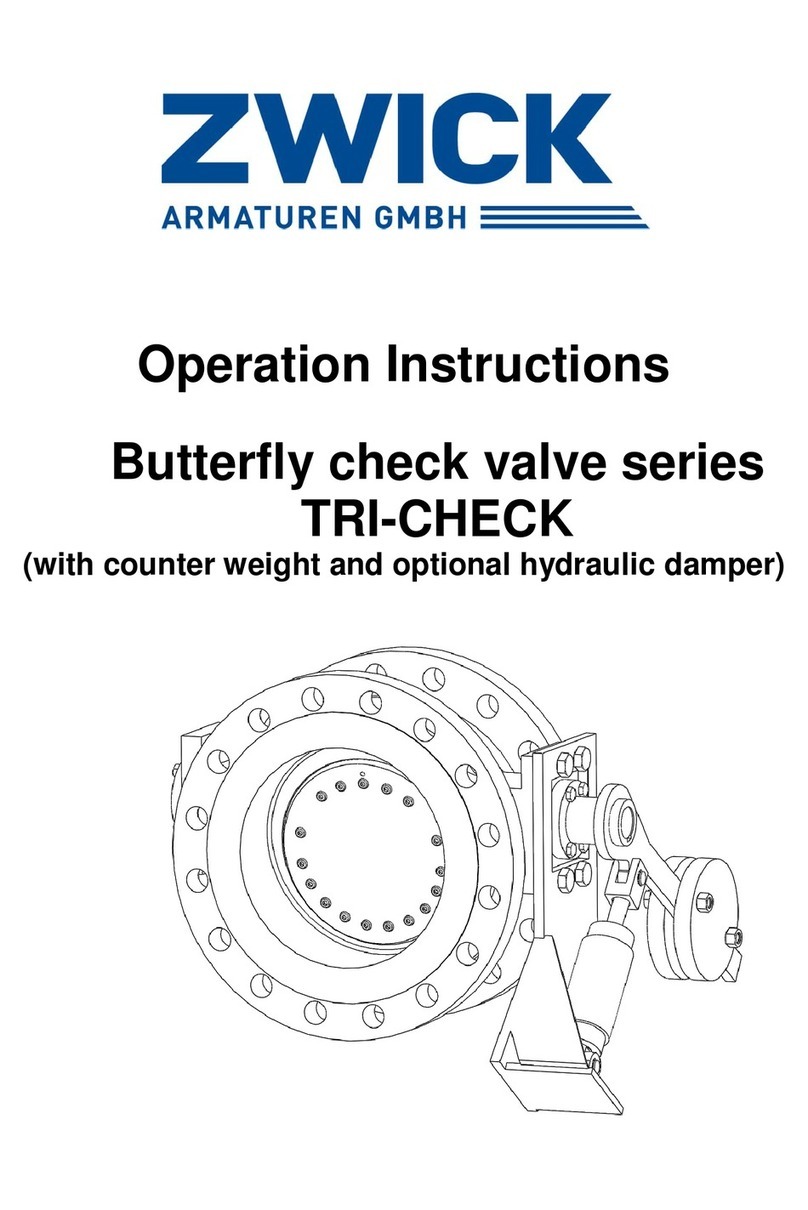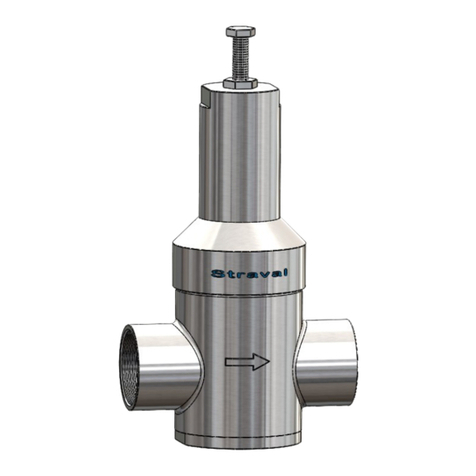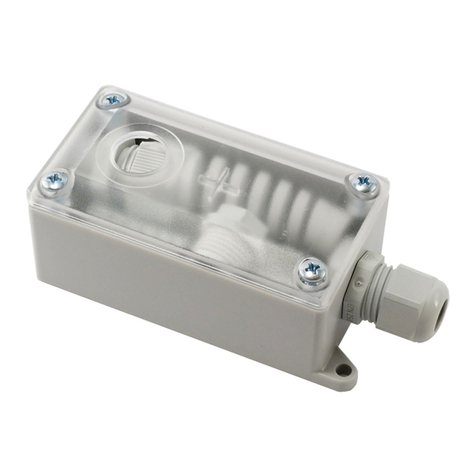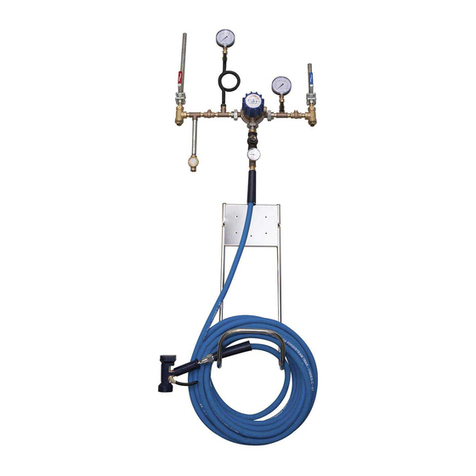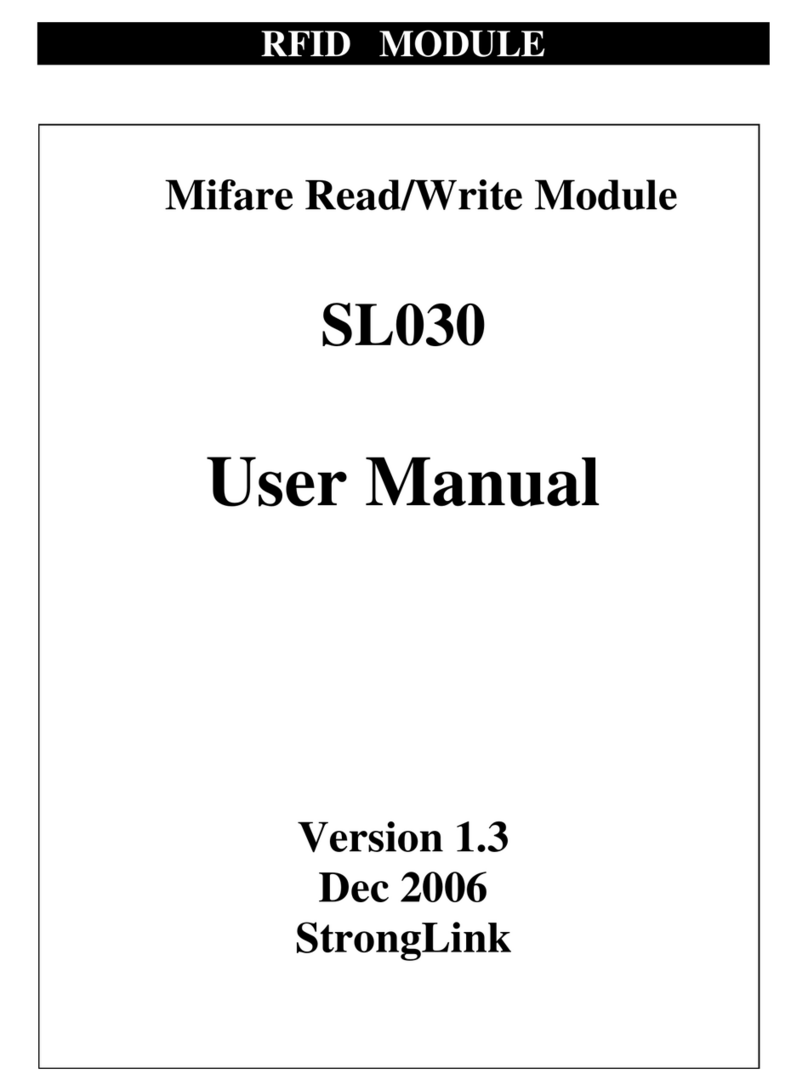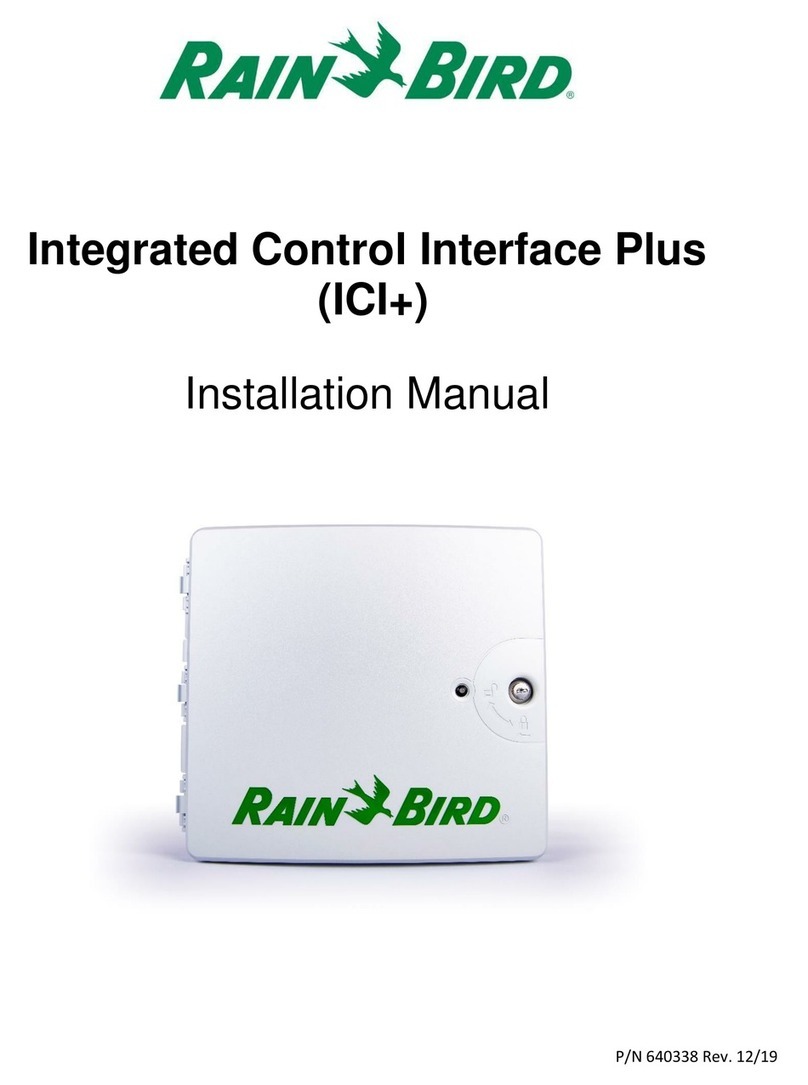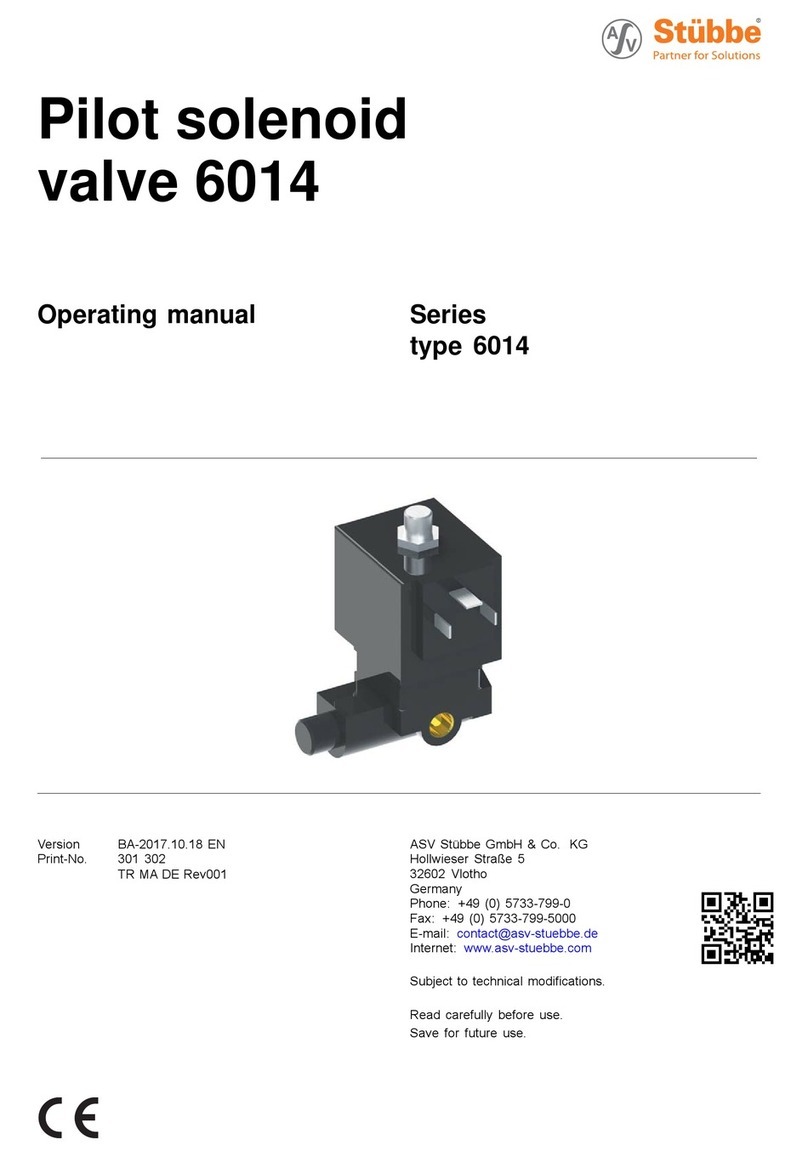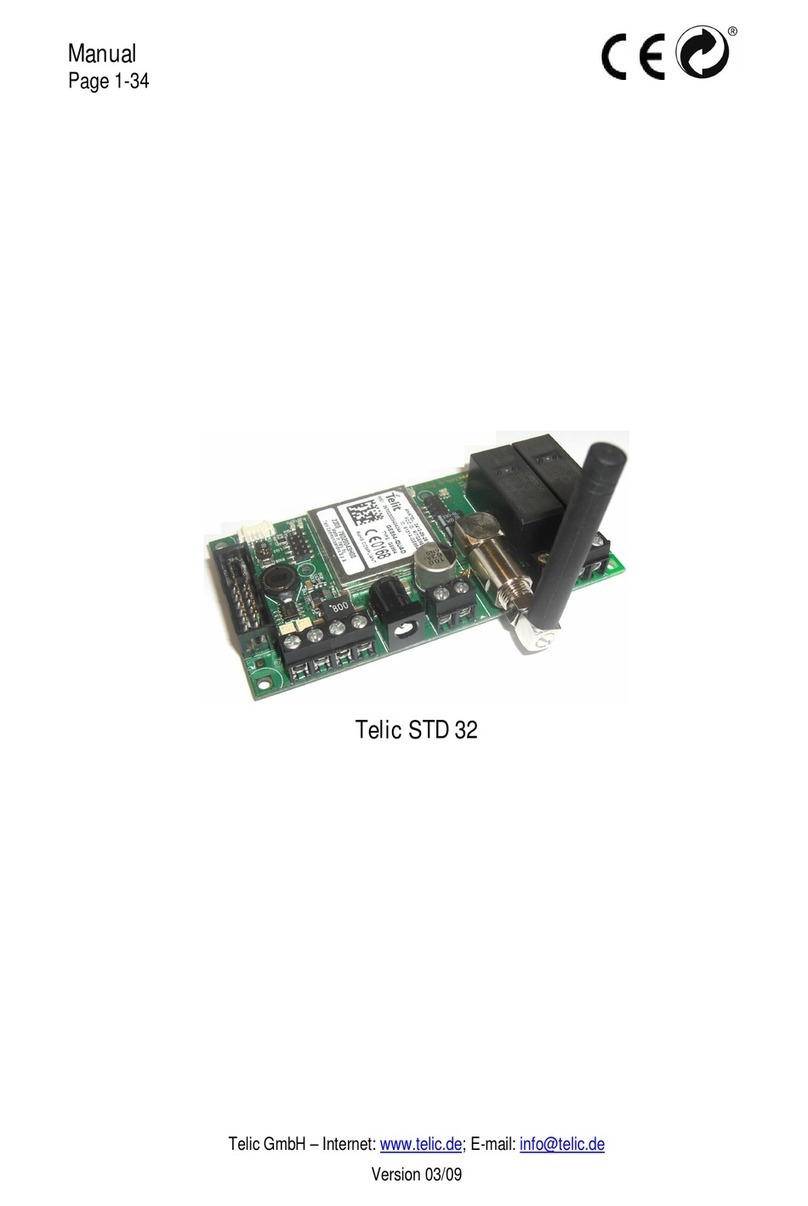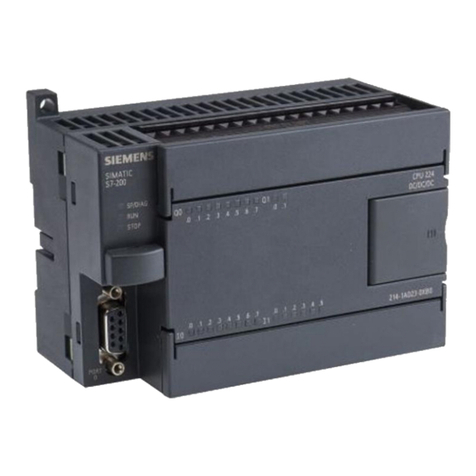TLV PN-DR User manual

172-65119MA-01 (PN-DR) 13 June 2013
Pneumatic Direct-acting Pressure Reducing Valve
for Steam and Air
PN-DR
Copyright © 2013 by TLV CO., LTD.
All rights reserved
Manufacturer
ISO9001/ISO14001
Kakogawa, Japan
is approved by LRQA LTD. to ISO 9001/14001

1
Contents
Introduction .......................................................................1
172-65119MA-01 (PN-DR) 13 Jun 2013
4
4
5
7
8
11
12
13
16
17
19
Safety Considerations .......................................................2
Specifications ....................................................................
Acceptable Operating Range ............................................
Correct Usage of the PN-DR Direct-acting Pressure Reducing Valve
Configuration.....................................................................
Installation .........................................................................
Adjustment ......................................................................
Maintenance....................................................................
Disassembly....................................................................
Reassembly ....................................................................
Troubleshooting ..............................................................
Product Warranty ............................................................
Introduction
Thank you for purchasing the PN-DR Pneumatic Direct-acting Pressure
Reducing Valve for Steam and Air.
This product has been thoroughly inspected before being shipped from the
factory. When the product is delivered, before doing anything else, check the
specifications and external appearance to make sure nothing is out of the
ordinary. Also be sure to read this manual carefully before use and follow the
instructions to be sure of using the product properly.
The PN-DR pneumatic direct-acting pressure reducing valve provides a
more stable secondary pressure than conventional direct-acting reducing
valves. The PN-DR is designed for a long service life, and is made of stainless
steel for superior durability.
For products with special order specifications or options, if detailed
instructions for the special order specifications or options are not contained in
this manual, please contact for full details.
This instruction manual is intended for use with the model(s) listed on the front
cover. It is necessary not only for installation but for subsequent maintenance,
disassembly/reassembly and troubleshooting. Please keep it in a safe place
for future reference.

2
Safety Considerations
•Read this section carefully before use and be sure to follow the instructions.
•Installation, inspection, maintenance, repairs, disassembly, adjustment
and valve opening/closing should be carried out only by trained
maintenance personnel.
•The precautions listed in this manual are designed to ensure safety and
prevent equipment damage and personal injury. For situations that may
occur as a result of erroneous handling, three different types of cautionary
items are used to indicate the degree of urgency and the scale of potential
damage and danger: DANGER, WARNING and CAUTION.
•The three types of cautionary items above are very important for safety: be
sure to observe all of them as they relate to installation, use, maintenance,
and repair. Furthermore, TLV accepts no responsibility for any accidents or
damage occurring as a result of failure to observe these precautions.
Symbols
Indicates a DANGER, WARNING or CAUTION item.
DANGE
R
Indicates an urgent situation which poses a threat of death or
serious injury
WARNING Indicates that there is a potential threat of death or serious injury
CAUTION
Indicates that there is a possibility of injury or equipment / product
damage
Install properly and DO NOT use this product outside the
recommended operating pressure, temperature and other
specification ranges.
Improper use may result in such hazards as damage to the product
or malfunctions that may lead to serious accidents. Local
regulations may restrict the use of this product to below the
conditions quoted.
Take measures to prevent people from coming into direct
contact with product outlets.
Failure to do so may result in burns or other injury from the
discharge of fluids.
When disassembling or removing the product, wait until the
internal pressure equals atmospheric pressure and the surface
of the product has cooled to room temperature.
Disassembling or removing the product when it is hot or under
pressure may lead to discharge of fluids, causing burns, other
injuries or damage.
CAUTION
Be sure to use only the recommended components when
repairing the product, and NEVER attempt to modify the
product in any way.
Failure to observe these precautions may result in damage to the
product and burns or other injury due to malfunction or the
discharge of fluids.
Safety considerations continued on next page.
172-65119MA-01 (PN-DR) 13 Jun 2013

3
Do not use excessive force when connecting threaded pipes
to the product.
Over-tightening may cause breakage leading to fluid discharge,
which may cause burns or other injury.
Use only under conditions in which no freeze-up will occur.
Freezing may damage the product, leading to fluid discharge,
which may cause burns or other injury.
CAUTION
Use only under conditions in which no water hammer will
occur.
The impact of water hammer may damage the product, leading to
fluid discharge, which may cause burns or other injury.
172-65119MA-01 (PN-DR) 13 Jun 2013

4
Specifications
Install properly and DO NOT use this product outside the recommended
operating pressure, temperature and other specification ranges.
Improper use may result in such hazards as damage to the product or
malfunctions which may lead to serious accidents. Local regulations
may restrict the use of this product to below the conditions quoted.
CAUTION
Use only under conditions in which no freeze-up will occur. Freezing
may damage the product, leading to fluid discharge, which may cause
burns or other injury.
CAUTION
Refer to the product nameplate for detailed specifications.
Serial Numbe
r
Valve No.*
Nominal
Diameter
Model
Maximum Operating
Temperature
Primary Pressure
Range
Secondary Pressure
Adjustable Range
* Valve No. is displayed for products with options. This item is omitted from the nameplate
when there are no options.
Acceptable Operating Range
Model PN-DR-2 PN-DR-6
Primary Pressure Range 0.2 - 1.6 MPaG (30 – 230 psig)
0.014 – 0.2 MPaG
(2 – 30 psig)
(but limited to 1/30 of
primary pressure)
0.18 - 0.6 MPaG
(27 – 85 psig)
Adjustable Pressure Range
Secondary pressure must not exceed
90% of primary pressure
Maximum Operating Temperature 220 °C (428 °F)
Motive Air Pressure 0 - 1.0 MPaG (0 – 150 psig)
(Oil free air, filtered to 5 µm)
172-65119MA-01 (PN-DR) 13 Jun 2013

5
Correct Usage of the PN-DR Direct-acting Pressure
Reducing Valve
Install properly and DO NOT use this product outside the recommended
operating pressure, temperature and other specification ranges.
Improper use may result in such hazards as damage to the product or
malfunctions which may lead to serious accidents. Local regulations
may restrict the use of this product to below the conditions quoted.
CAUTION
1. The PN-DR should be operated only within its specifications.
2. Installing an ON / OFF Valve (Solenoid Valve or Motorized Valve)
Motorized
Valve
Inlet Side
Pressure
Reducing
Valve
Outlet Side
Solenoid
Valve
Pressure
Reducing
Valve
If an on-off valve is required to stop supply of steam or air to the equipment, install
it at the inlet side of the PN-DR.
If a solenoid valve is installed at the outlet of the PN-DR, it will cause heavy
chattering and may lead to damage of the PN-DR. (When the on-off valve opens,
the secondary pressure of the reducing valve changes from zero to the set
pressure. Passing through an area of the reducing ratio of less than 30:1 where
adjustment is impossible, chattering occurs momentarily.) To save energy, install
the on-off valve as near to the boiler, or compressor, as possible.
NOTE: To prevent water hammer, it is recommended that a slow-acting motorized
on-off valve be used. If a fast-acting solenoid valve is used, the potential water
hammer effect can damage the equipment and the pressure reducing valve.
3. Installing a Control and/or Safety Valve
Safety
Valve
Steam or Air-using
Equipment
Control
Valve
Pressure
Reducing
Valve
Safety
Valve
Steam or Air-using
Equipment
Control
Valve
Pressure
Reducing
Valve
Safety
Valve
Control
Valve
Steam or Air-using
Equipment
Pressure
Reducing
Valve
Safety
Valve
Control
Valve
Steam or Air-using
Equipment
Pressure
Reducing
Valve
A control valve (i.e. for temperature control) installed between the PN-DR and the
equipment (downstream of the reducing valve) may raise the pressure between
the PN-DR and the control valve when the control valve is closed, depending on
the spatial relationship. Therefore, this valve should be installed close to the
equipment, as illustrated. Also, a safety valve should be installed downstream of
the control valve.
NOTE: When installing a safety valve to protect steam or air equipment, be sure
to install it on, or directly before the inlet, of the equipment. If the safety valve is
installed between the PN-DR and a control valve, an eventual pressure rise could
activate the safety valve.
172-65119MA-01 (PN-DR) 13 Jun 2013

6
4. Precautions for the Installation of Additional Fittings Before or After the PN-DR
In order to ensure a stable flow of air or steam, the piping upstream and
downstream of the reducing valve must be straight runs. If a pressure reducing
valve is installed either directly before or after an elbow or control valve,
unevenness in flow may result in chattering and unstable pressure.
To ensure a stable flow, it is recommended that the pressure reducing valve be
installed on straight runs of piping, as illustrated below.
172-65119MA-01 (PN-DR) 13 Jun 2013
Inlet (primary side) of the pressure reducing valve NOTE: d = pipe diameter
Maintain a straight piping
run of 10 d or more when a
manual valve, a strainer or
an elbow, etc. is installed.
(Example: if nominal size is 25
mm (1 in), have 250 mm (10 in)
or more)
Pressure
Reducing
Valve
10 d or more
Valve, strainer,
elbow, etc.
Pressure
Reducing
Valve
10 d or more
Valve, strainer,
elbow, etc.
Pressure
Reducing
Valve
Less than
10 d
Valve, strainer,
elbow, etc.
Pressure
Reducing
Valve
Less than
10 d
Valve, strainer,
elbow, etc.
Maintain a straight piping
run of 30 d or more when
an automated valve (on-off
valve) is installed.
(Example: if nominal size is 25
mm (1 in), have 750 mm (30 in)
or more)
Automatic
Valve
Pressure
Reducing
Valve
30 d or more
Automatic
Valve
Pressure
Reducing
Valve
30 d or more
Automatic
Valve
Pressure
Reducing
Valve
Less than
30 d
Automatic
Valve
Pressure
Reducing
Valve
Less than
30 d
Outlet (secondary side) of the pressure reducing valve
Maintain a straight piping
run of 15 d or more when a
manual valve, a strainer or
an elbow, etc. is installed.
(Example: if nominal size is 25
mm (1 in), have 375 mm (15 in)
or more)
Pressure
Reducing
Valve Valve, strainer,
elbow, etc.
15 d or more
Pressure
Reducing
Valve Valve, strainer,
elbow, etc.
15 d or more
Pressure
Reducing
Valve Valve, strainer,
elbow, etc.
Less than
15 d
Pressure
Reducing
Valve Valve, strainer,
elbow, etc.
Less than
15 d
Maintain a straight piping
run of 30 d or more when a
safety valve is installed.
(Example: if nominal size is 25
mm (1 in), have 750 mm (30 in)
or more)
Pressure
Reducing
Valve
Safety Valve
30 d or more
Pressure
Reducing
Valve
Safety Valve
30 d or more
Less than
30 d
Pressure
Reducing
Valve
Safety Valve
Less than
30 d
Pressure
Reducing
Valve
Safety Valve
Maintain a straight piping run
of 30 d or more when another
pressure reducing valve is
installed. (Two-stage pressure
reduction)
(Example: if nominal size is 25 mm
(1 in) , have 750 mm (30 in) or
more)
Pressure
Reducing
Valve
Pressure
Reducing
Valve
30 d or more
Pressure
Reducing
Valve
Pressure
Reducing
Valve
30 d or more
Pressure
Reducing
Valve
Pressure
Reducing
Valve
Less than
30 d
Pressure
Reducing
Valve
Pressure
Reducing
Valve
Less than
30 d
–

7
Configuration
No. Name A*1B*1C*1D*1E*1
1 Body
2 Cover
3 Screen
4 Coil Spring
5 Main Valve
6 Valve Seat
Gasket
7 Valve Seat
8 Spacer*3
9 Snap Ring
10 Valve Stem
11 Bellows
12 Cover Gasket*2
13 Coil Spring
14 Spring Guide
15 Steel Ball
16 Cover Bolt
17 Holder Nut
18 Adjustment
Handle
19 Nameplate
20 Retaining Ring
21 Retainer
22 Seal Ring
23 Packing
24 Slide Bearing*2*3
25 Snap Ring*2*3
*1Replacement parts are available
only in the following kits:
A: Maintenance Kit
B: Repair Kit for Spacer
C: Repair Kit for Main Valve,
D: Repair Kit for Bellows
E: Repair Kit for Adjustment Handle
*2Number of parts: 2 pieces
*3Shipped as a unit
172-65119MA-01 (PN-DR) 13 Jun 2013

8
Installation
Install properly and DO NOT use this product outside the recommended
operating pressure, temperature and other specification ranges.
Improper use may result in such hazards as damage to the product or
malfunctions which may lead to serious accidents. Local regulations
may restrict the use of this product to below the conditions quoted.
CAUTION
Take measures to prevent people from coming into direct contact with
product outlets. Failure to do so may result in burns or other injury from
the discharge of fluids.
CAUTION
Installation, inspection, maintenance, repairs, disassembly, adjustment and valve
opening/closing should be carried out only by trained maintenance personnel.
1. Blowdown
Open
Closed Closed
Pressure
Reducing
Valve
Blowdown using a bypass line
Before installing the PN-DR
unit, be sure to blow down all
piping thoroughly.
If this is not possible, perform a
blowdown using the bypass
valve. Blowdown is especially
important for newly installed
piping or after the system has
been shut down for a long
period of time.
2. Removing the Protective Caps
Before installation, be sure to remove all protective seals and caps.
(Found in 3 locations; on the product inlet and outlet, motive air
connecting port.)
3. Tolerance Angle for Installation
10°
10°
15°15°
Make sure the PN-DR is installed on horizontal piping
with the adjustment handle facing up.
Ensure the raised TLV lettering on the body is
horizontal and the arrow is pointing in the direction of
flow. The allowable inclination of the PN-DR is 10°
front-to-back and 15°horizontally.
4. Piping Support
Pay attention to avoid excessive load, bending and
vibration. Supporting the inlet and outlet pipes
securely is recommended.
172-65119MA-01 (PN-DR) 13 Jun 2013

9
5. Maintenance Space
200 (8)
200 (8)
200 (8) 200 (8)
Leave sufficient space for maintenance, inspection
and repair.
Unit: mm (in)
6. Piping Size
Straight piping: 10 d or longer upstream,
15 d or longer downstream
Diffuser
Pressure
Reducing
Valve
Straight piping: 10 d or longer upstream,
15 d or longer downstream
Diffuser
Pressure
Reducing
Valve
Pressure
Reducing
Valve
Pressure
Reducing
Valve
Pressure
Reducing
Valve
If it is expected that the
secondary flow velocity will
be more than 30m/s (100
ft/s), install a diffuser in
order to keep the flow
velocity below 30m/s(100
ft/s). If the distance
between the reducing valve
and the equipment is great,
a possible drop in pressure
should be taken into
consideration when
selecting the piping size.
If installing a strainer,
horizontal installation is
recommended in order to
prevent pooling of
condensate.
7. Two-stage Pressure Reduction
Pressure
Gauge
Bypass Valve
Inlet
Valve Outlet
Valve
Safety Valve
(Relief Valve)
Primary
Side
Pressure
Reducing
Valve
Bypass Valve
Secondary
Side
Inlet
Valve Outlet
Valve
Pressure
Reducing
Valve
Pressure
Gauge
Pressure
Gauge
Bypass Valve
Inlet
Valve Outlet
Valve
Safety Valve
(Relief Valve)
Primary
Side
Pressure
Reducing
Valve
Bypass Valve
Secondary
Side
Inlet
Valve Outlet
Valve
Pressure
Reducing
Valve
Pressure
Gauge
Pressure
Gauge
Inlet
Valve Outlet
Valve
Safety Valve
(Relief Valve)
Primary
Side
Pressure
Reducing
Valve
Bypass Valve
Secondary
Side
Pressure
Gauge
Pressure
Gauge
Inlet
Valve Outlet
Valve
Safety Valve
(Relief Valve)
Primary
Side
Pressure
Reducing
Valve
Bypass Valve
Secondary
Side
Pressure
Gauge
Employ 2-stage pressure
reduction if the required
reduction is not possible due to
PN-DR operating range
limitations
(when it is not possible to reduce
to the desired pressure using a
single pressure reducing valve).
Inlet
Valve Outlet
Valve
172-65119MA-01 (PN-DR) 13 Jun 2013

10
8. Valves and Accessories
Ball Valve Pressure
Reducing
Valve
Ball Valve
Globe Valve
Ball Valve Pressure
Reducing
Valve
Ball Valve
Globe Valve
Pressure
Reducing
Valve
Pressure
Reducing
Valve
Always install a bypass line. At the inlet and outlet, install a pressure gauge and a
shut-off valve. Ball valves, which will not retain condensate, are recommended for
inlet/outlet shut-off valves. The nominal pipe size for the bypass line should be 1/2
or greater of the primary pipe size.
9. Motive Air
Motive Air
Connection Port
Air Regulator
for Motive Air
Supply oil free air filtered to 5 µm for the
motive air and adjust the air pressure to
match desired value by using an air
regulator or similar device.
172-65119MA-01 (PN-DR) 13 Jun 2013

11
Adjustment
The PN-DR can set secondary pressure(s) either by operation of the adjustment
handle or adjustment of the motive air pressure, or a combination of both.
To avoid problems such as water hammer and to protect steam and air equipment,
the PN-DR reducing valve should be correctly adjusted.
1. It is necessary to blow down all pipe lines thoroughly.
The blowdown is especially important if the line is new or has been shut down for a
long period of time. Take particular care to ensure that matter such as condensate
and dirt does not remain inside the equipment.
(Stay clear of any pressurized blow-out from the safety valve.)
2. Make sure that the shut-off and bypass valves
located upstream and downstream of the PN-DR
are completely closed.
3. Turn the adjustment handle counterclockwise to
free the coil spring.
Counterclockwise
Fully raise the
adjustment handle
4. Slowly, fully open the shut-off valve at the inlet of the PN-DR.
5. Slightly open the shut-off valve at the outlet of the PN-DR.
6. Slowly turn the adjustment handle clockwise until the desired secondary (steam or
air) pressure is obtained with the pressure of the coil spring. Wait several minutes.
Be careful not to make rapid adjustments as the safety valve may be activated or
equipment may be damaged by water hammer.
Clockwise
Increase Pressure
Counterclockwise
Decrease Pressure
7. Adjust the motive air pressure until the desired secondary (steam or air) pressure
is obtained. Wait several minutes. Be careful not to make rapid adjustments as the
safety valve may be activated or equipment may be damaged by water hammer.
Motive air pressure should be adjusted to set the secondary pressure higher than
the pressure set in step 6. (Using motive air, secondary pressure cannot be set to
a pressure lower than that set in step 6).
8. Slowly, fully open the shut-off valve at the outlet of the PN-DR.
9. When shutting down the system, always close the outlet shut-off valve first and
then the inlet valve.
172-65119MA-01 (PN-DR) 13 Jun 2013

12
Maintenance
Take measures to prevent people from coming into direct contact with
product outlets. Failure to do so may result in burns or other injury from
the discharge of fluids.
CAUTION
Be sure to use only the recommended components when repairing the
product, and NEVER attempt to modify the product in any way. Failure to
observe these precautions may result in damage to the product or burns
or other injury due to malfunction or the discharge of fluids.
CAUTION
Operational Check
To ensure long service life of the PN-DR, the following inspection and maintenance
should be performed regularly.
Part Inspection and Maintenance Frequency
Screen Disassemble and clean annually. If there is substantial blockage,
install a strainer (approximately 60 mesh) ahead of PN-DR.
Main Valve, Valve Seat If there is chattering or dirt, premature wear may result.
Valve Stem,
Spacer (Slide Bearing)
If hunting or chattering takes place, premature wear may result.
Bellows If hunting or chattering takes place, cracks or fatigue may develop
in a short period of time.
Seal Ring Replace annually.
Premature wear may occur.
Packing Replace annually.
Premature wear may occur.
172-65119MA-01 (PN-DR) 13 Jun 2013

13
Disassembly
When disassembling or removing the product, wait until the internal
pressure equals atmospheric pressure and the surface of the product
has cooled to room temperature. Disassembling or removing the
product when it is hot or under pressure may lead to discharge of fluids,
causing burns, other injuries or damage.
CAUTION
It is a recommended practice to dismantle and inspect the PN-DR once a year for
preventive maintenance purposes. It is especially important to perform an inspection
immediately after the initial run of a new line or before or after equipment such as a
heater is out of service for a long period of time. (Installation, inspection,
maintenance, repairs, disassembly, adjustment and valve opening/closing should be
carried out only by trained maintenance personnel.)
Remove all steam/pressurized air from the piping (both upstream and downstream).
Remove all motive air pressure.
Wait for the body to cool before attempting to remove the PN-DR from the line. Then
remove the PN-DR from the piping, and secure it in a vise to perform the inspection.
Dismantling the Adjusting Section
Loosen the adjustment handle completely and remove the cover bolts. After
removing the cover, you will see the steel ball, the spring retainer and the coil spring.
Check for seizure or any damaged screw threads.
Remove the retaining ring. The seal ring and the packing can be removed by
loosening the adjustment handle and the holder nut.
Check and make sure that the seal ring is not deteriorated and the packing has no
abnormality.
Retaining Ring
Steel Ball
Spring Guide
Coil Spring
Cover Bolt
Cover
Retainer
Cover Gasket
Packing
Seal Ring
Holder Nut
A
djustable Handle
172-65119MA-01 (PN-DR) 13 Jun 2013

14
Dismantling the Bellows Section
Remove the bellows from the body, then the valve stem. Pinch the straight sections
of the snap ring that is holding the spacer together using a tool such as a needle-
nose pliers and remove the snap ring. Remove the spacer.
Valve Stem
Snap Ring*
Slide Bearing*
Spacer
Slide Bearing*
Snap Ring*
Body
Bellows
Cover Gasket
Snap Ring
*Cannot be removed individually as it is incorporated with the spacer
and must be replaced as a set with the spacer.
Dismantling the Valve Section
Loosen the valve seat with a wrench and remove it from the body. The coil spring is
exerting an upward pressure on the bottom of the valve seat, so be careful that the
valve seat is not thrown out. After removing the valve seat, remove the main valve,
the coil spring and the screen.
Body
Screen
Coil Spring
Valve Seat
Valve Seat Gasket
Main Valve
Cleaning
After inspection and removal of any abnormality, clean and reassemble the parts.
The following parts will require cleaning before reassembly:
Threads of the adjustment handle, threads of the cover, bellows, holder nut,
valve stem, main valve, valve seat, spacer (including slide bearing), screen
It is permissible to clean using water. However, cleaning with a mild detergent is
recommended for more effective cleaning.
172-65119MA-01 (PN-DR) 13 Jun 2013

15
Exploded View
Adjustment
Handle
Retainer
Holder Nut
Seal Ring
172-65119MA-01 (PN-DR) 13 Jun 2013
Valve Seat
Valve Seat
Gasket
Main Valve
Coil Spring
Screen
Body
Packing
Cover Bolt
Coil
Spring
Bellows
Cover
Cover
Gasket
Retaining Ring
Snap
Ring
Steel Ball
Spring Guide
Cover Gasket
(Upper Bellows
Flange)
Spacer
Slide Bearing*
Slide Bearing*
Snap Ring*
Valve Stem
Snap Ring*
*Cannot be removed individually as it is incorporated with the spacer and
must be replaced as a set with the spacer.

16
Reassembly
Reassemble the unit using the same procedure as used for disassembling it; but in
reverse order. In addition, observe the following precautions:
1. The PTFE gasket may be re-used if free from fault, crushing or deformation.
2. Apply anti-seize to the steel ball and threaded portions of screws, bolts and the
adjustment handle. Apply a small amount of anti-seize agent to the threads of
the valve seat carefully to ensure it does not come into contact with other parts.
3. Fasten the bolts one at a time in a diagonal pattern alternately to provide
uniform seating.
4. After assembly, make sure that the valve stem operates smoothly without
binding.
As shown in the figures above, when the valve is tightened it may become off-
centered on the valve seat. If this occurs, move the valve back to center.
Valve Seatin
g
Surface
5. Standard torque for fastening the respective screws and the width across flats of
the tools to be used are as follows:
Torque Distance Across Flats
Part N⋅m (lbf·ft) mm (in)
Cover Bolt 25 19 13 (1/2)
Valve Seat 70 (51) 27 (11/16)
Holder Nut 10 (7) 30 (13/16)
(1 N⋅m ≈10 kg⋅cm)
NOTE: - If drawings or other special documentation were supplied for the product,
any torque given there takes precedence over values shown here.
172-65119MA-01 (PN-DR) 13 Jun 2013

17
Troubleshooting
When disassembling or removing the product, wait until the internal
pressure equals atmospheric pressure and the surface of the product
has cooled to room temperature. Disassembling or removing the
product when it is hot or under pressure may lead to discharge of fluids,
causing burns, other injuries or damage.
CAUTION
This product is shipped after stringent checks and inspection, and should perform its
intended function for a long period of time without failure. However, should there be
any problem encountered in the operation of the PN-DR, consult the troubleshooting
guide below. Problems are classified as follows:
1. The secondary pressure does not increase
2. The secondary pressure cannot be adjusted or increases abnormally
3. Hunting (fluctuation of the secondary pressure) occurs
4. Chattering (a heavy mechanical noise) occurs
5. Abnormal noises
Major causes for the above problems are usage under non-specified conditions (out
of specification), insufficient pressure or flow rate, and clogs by dirt and scale.
To ensure performance for a long period of time, it is recommended that the
“Acceptable Operating Range”, “Correct Usage of the PN-DR Direct-acting Pressure
Reducing Valve” and “Adjustment” sections be reviewed.
Problem Symptom Cause Remedy
No steam/air is being supplied
The valve at the primary side
is closed
Check the primary/secondary
piping and valves of the unit
No motive air is being supplied Check motive air supply
The entrance to the screen or
strainer is clogged
Clean or blow down
Flow rate exceeds
specifications
Check the flow rate; check
the model selection, replace
with a more suitable unit if
necessary
The
secondary
pressure does
not rise
Pressure does not
increase
It exceeds the adjustable
pressure range
Check the model selection,
replace with a more suitable
unit if necessary
The flow rate is too low Check the flow rate; check the
model selection, replace with a
unit that has smaller nominal
diameter or more a suitable
unit if necessary
Pressure fluctuation at the
primary side is large
Check the primary pressure;
check the model selection,
replace with a more suitable
unit if necessary
Buildup on the valve stem
prevents smooth movement
through the spacer
Clean and inspect the valve
stem and spacer
Flow rate fluctuation is too
large
Check the flow rate, re-set
the pressure; check the
model selection, replace with
a more suitable unit if
necessary
The
secondary
pressure
cannot be
adjusted or
increases
abnormally
Adjustment is
difficult and set
pressure varies
The motive air pressure
fluctuates
Check motive air pressure
Troubleshooting continued on next page
172-65119MA-01 (PN-DR) 13 Jun 2013

18
172-65119MA-01 (PN-DR) 13 Jun 2013
Problem Symptom Cause Remedy
The adjustment handle has
seized
Replace with a new
adjustment handle
The holes in the spacer are
clogged
Clean
The slide bearing is distorted
or damaged
Replace with a new spacer
(when replacing the slide
bearing or snap ring, these
parts need to be replaced as
a set with the spacer)
The bellows is distorted or
damaged
Replace with a new bellows
Adjustment is
difficult and set
pressure varies
The selected model is
inappropriate for the service
conditions (specifications)
Check the model selection,
replace with a more suitable
unit if necessary
The bypass valve is leaking Check, clean, and replace with
a new valve if necessary
The
secondary
pressure
cannot be
adjusted or
increases
abnormally
Upon closing the
valves at the
secondary side,
the secondary
pressure abruptly
rises as high as
the primary
pressure
There is a build-up of dirt on
or damage to the main valve
or the valve seat
Clean and align
Occurs at low
steam/air demand
The flow rate is too low Check the flow rate; check
the model selection, replace
with a unit that has smaller
nominal diameter or a more
suitable unit if necessary
There is too high a reduction
ratio
Use two-stage reductionHunting never
stops
The selected model is
inappropriate for the service
conditions (specifications)
Check the model selection,
replace with a more suitable
unit if necessary
Condensate is entrained Install a steam trap; check
the piping
Hunting or
chattering
occurs
Chattering never
stops
The selected model is
inappropriate for the service
conditions (specifications)
Check the model selection,
replace with a more suitable
unit if necessary
The required pressure
reduction exceeds
specifications
Use two-stage reduction
Flow rate exceeds
specifications
Check the flow rate; check
the model selection, replace
with a unit that has larger
nominal diameter or a more
suitable unit if necessary
Abnormal
noises
Makes a high-
pitched noise
The valve installed close to
the reducing valve
opens/closes too quickly
Install the valve at as great a
distance away as possible
NOTE: When replacing parts with new, use the parts list for reference and replace with parts
from the Maintenance Kit, Repair Kit, etc. (Please note that replacement parts are
only available in pre-packaged kits.)

172-65119MA-01 (PN-DR) 13 Jun 2013
19
Product Warranty
1. Warranty Period
One year following product delivery.
2. Warranty Coverage
TLV CO., LTD. warrants this product to the original purchaser to be free
from defective materials and workmanship. Under this warranty, the
product will be repaired or replaced at our option, without charge for parts
or labor.
3. This product warranty will not apply to cosmetic defects, nor to any product
whose exterior has been damaged or defaced; nor does it apply in the
following cases:
1) Malfunctions due to improper installation, use, handling, etc., by other
than TLV CO., LTD. authorized service representatives.
2) Malfunctions due to dirt, scale, rust, etc.
3) Malfunctions due to improper disassembly and reassembly, or
inadequate inspection and maintenance by other than TLV CO., LTD.
authorized service representatives.
4) Malfunctions due to disasters or forces of nature.
5) Accidents or malfunctions due to any other cause beyond the control
of TLV CO., LTD.
4. Under no circumstances will TLV CO., LTD. be liable for consequential
economic loss damage or consequential damage to property.
* * * * * * *
For Service or Technical Assistance:
Contact your representative or your regional office.
Manufacturer
CO., LTD.
881 Nagasuna, Noguchi
Kakogawa, Hyogo 675-8511 JAPAN
Tel: 81-(0)79 - 427 - 1800
Table of contents
Other TLV Control Unit manuals
